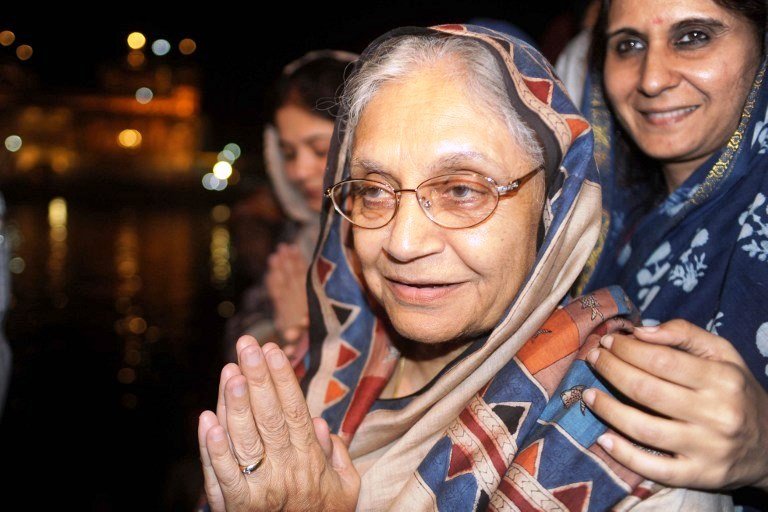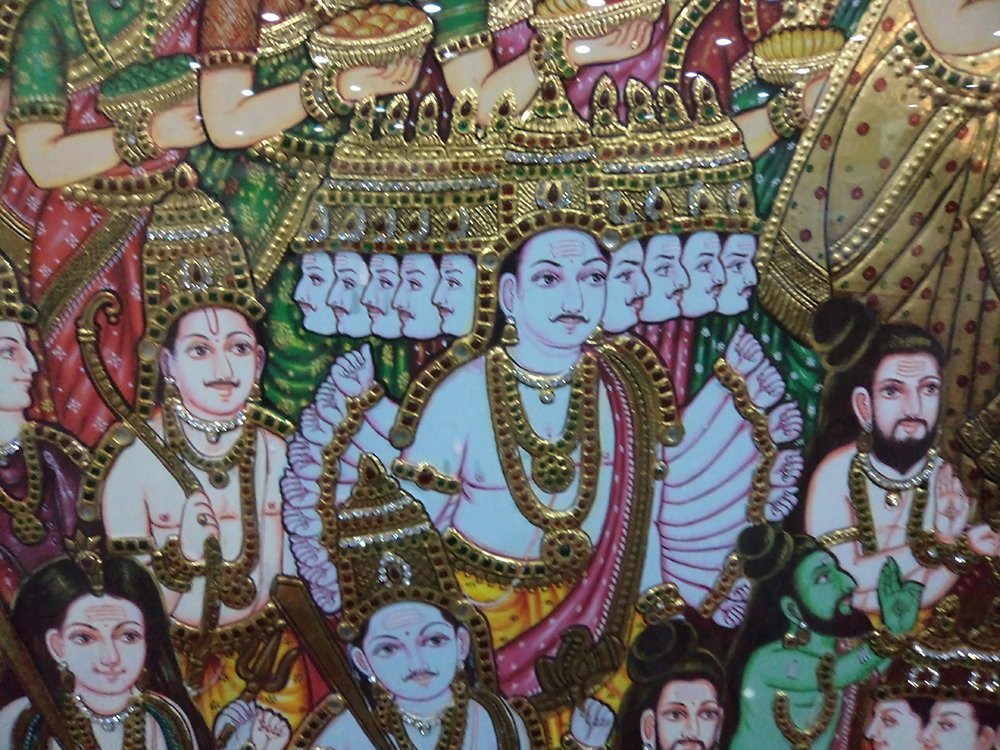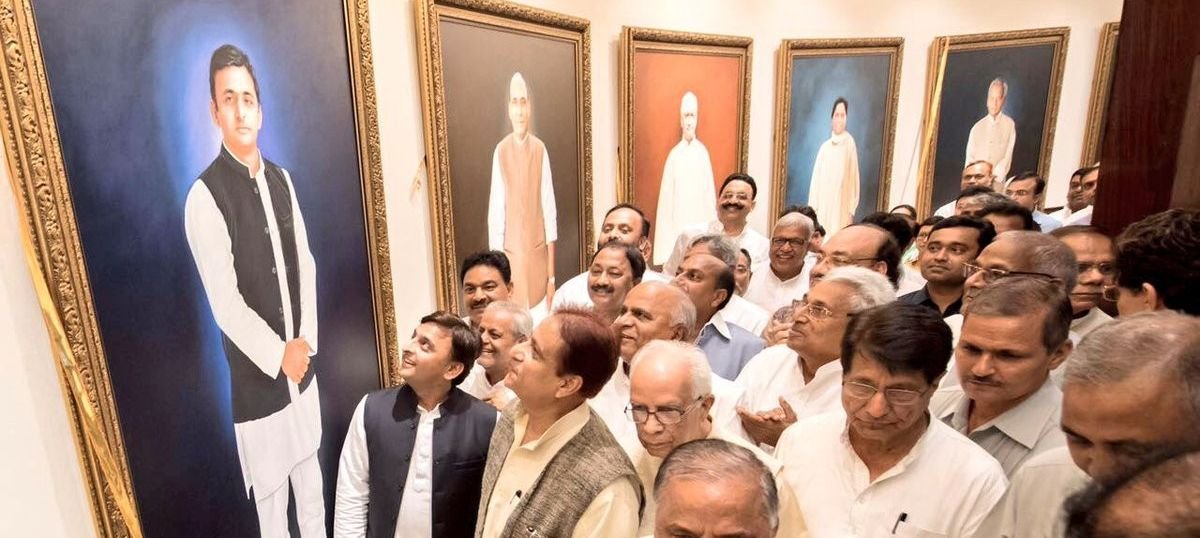It must be a heady feeling for the Brahmins of Uttar Pradesh to have the political parties court them with such ardour in the run-up to the 2017 state Assembly election. Yet even this headiness can’t possibly make them hope for the return of their glory days. They know it is perhaps impossible for them to again become king, as they were for most of UP’s history.
The Brahmins now are in the running only to emerge as one of the most influential king-makers in the state. This demands they use their number – said to be 11% after including the Bhumihars – more effectively in electoral politics for preserving their socio-economic status that is still relatively better than that of most other social groups.
The possibility of becoming an influential king-maker should still cheer the Brahmins of the state, given their veritable dethroning following the implementation of the Mandal Commission recommendation granting reservations to the Other Backward Classes in Central government jobs in 1990.
UP hasn’t had a Brahmin chief minister from the time ND Tiwari demitted office in December 1989. The state’s first chief minister was a Brahmin – Govind Ballabh Pant. Such Brahmin stalwarts as Kamalapati Tripathi, HN Bahugana and Sripati Mishra have occupied that chair.
Since Tiwari’s exit, the state has had either Dalit or an Other Backward Classes person as chief minister, barring the less than two and a half years during which the coveted post was held by two upper caste politicians – Ram Prakash Gupta and Rajnath Singh. Both belonged to the Bharatiya Janata Party, testifying to the possibility that even the most favoured party of Brahmins considers them a drag to its ambition of growth.
For Brahmins, not to have a chief minister from their caste – that too, for 26 years – is shattering to their self-image. Their exalted social status, their role in the national movement, their educational attainment, domination of the bureaucracy and national discourse inculcated in the Brahmins the belief that they are ordained to rule India – and UP. This belief was further reinforced as India’s first three prime ministers were all Brahmins from UP.
Caste consolidation
Mandal broke the hegemony of the upper castes. Their outrage over reservations brought about an OBC and Dalit consolidation, expressed through the alliance between the Samajwadi Party and the Bahujan Samaj Party in 1993. In the SP-BSP coalition government only 4% of berths were held by upper castes, down from the whopping 60% in 1991.
Then again, for the first time in UP Assembly’s history, the upper castes accounted for less than 30% of all MLAs in 1993. In 1952, they had constituted nearly 60% of all members. As the largest constituent of the twice-born groups, the shrinking of the upper caste pie had a telling impact on Brahmins. They felt aggrieved at having lost their earlier supremacy.
Their loss was also psychological, as Mayawati and her mentor and BSP founder Kanshi Ram challenged the Brahmin’s self-image. This was articulated through the slogan they coined: “Tilak, Tarazu aur Talwar, Inko maaro jutey chaar” The three symbols in the slogan symbolised three social groups – the tilak represented the Brahmins, the tarazu or balance the Bania, and talvar or the sword the Rajputs – and the message was that they deserved to be shown their place.
Social scientist Christophe Jaffrelot in his The Rise of the Lower Castes suggests the “jutey” or the shoes in the slogan signified Jatavs – the BSP’s mainstay. In other words, Ram and Mayawati were exhorting the Jatavs to retaliate against the oppressive behaviour of Brahmins, Banias and Rajputs. Thus, from being the society’s leader, its conscience, the Brahmins were now cast in the mould of exploiters.

Back in the reckoning
The wheel, ostensibly, seems to be coming full circle. The Congress has nominated Sheila Dikshit as its chief ministerial candidate in UP, in the hope of resurrecting the party’s fortunes on the support of Brahmins. The community’s response has been enthusiastic. It is perhaps a testament to their nostalgia for the glory days that they have chosen to ignore Dikshit’s Punjabi Khatri origins, accepting her as one of their own because of her marriage into a UP Brahmin family of eminence.
Likewise, the fear of alienating Brahmins has had the BJP refrain from naming its chief ministerial candidate. Having wooed the lower castes over the last 27 months, it feels its rhetoric of empowering subaltern groups might seem hypocritical if it were to choose a Brahmin as its chief ministerial candidate.
On the other hand, not naming a Brahmin as chief minister could result in the community expressing its dismay electorally. The Brahmins have been saying that if even a BJP government has to have a lower caste chief minister, then why should it matter to them that a Dalit or an OBC becomes UP’s boss.
This logic is an important factor behind the increasing fragmentation of Brahmin votes over the last two Assembly elections. Indeed, pragmatism has come to determine the political behaviour of Brahmins.
Top influencers

Overcoming their memory of the insults that Mayawati heaped on them in the 1990s, the Brahmins, to an extent, responded to the overtures she made to them in 2005.
She, too, had her own compulsions in wooing the Brahmins – an electoral majority had eluded her despite commanding the overwhelming support of Dalits. Of the three governments she formed with the support of other parties, only one could last more than a year. Which is what set her to woo other social groups.
In May 2005, Mayawati coined the slogan of “Brahmin-Dalit bhai bhai”. The BSP instituted Bhaichara samitis or brotherhood committees in every assembly constituency with Brahmins as presidents and Dalits as secretaries. It organised 50 Brahmin jodo sammelans or Brahmin enrolment conferences, culminating in a Brahmin Maha rally in Lucknow.
“Mayawati was greeted with Brahminical rituals,” The Hindu reported, “a group of priests chanting Vedic hymns while she was presented with a silver axe, the mythical weapon of Lord Parashuram – a Brahminical icon.” There can’t be a more compelling evidence of the pragmatism of Brahmins.
This bonhomie was reflected in the diversity of social background of those elected on the BSP ticket. Of the 206 BSP MLAs in 2007, 60 were upper castes, constituting 29% of the party’s strength in the Assembly. More significantly, the upper castes also held 30% of berths in Mayawati’s Cabinet, as against the meagre 6.5% they had in her 1995 government.
But this doesn’t mean the Brahmins switched their votes en bloc – in fact, only 16% of them had voted the BSP, as against the 44% who did for the BJP. But the Brahmin’s value lies not only in their vote, but also in their ability to influence popular perceptions.
This just might have been a factor why the BSP also polled 12% of Rajputs and 14% of Vaishya votes, which augmented the party’s massive Jatav vote base to give it the electoral majority in the Assembly. In the 2002 Assembly elections, the BSP had secured just 4.8% of the entire upper caste votes, suggesting the impact of incremental gains.
Inspired, five years later, the BSP assigned 70 tickets to Brahmins, the highest among all social groups, including even the Jatavs. Of them, only 10 were elected. The BSP was voted out. But it did register a 3% increase in Brahmin votes in 2012. The BSP’s defeat was ascribed to a massive dip in the party’s Dalit votes.
By contrast, 21 Brahmins were elected on the Samajwadi Party ticket in 2012, which had given 45 tickets to this social group. Yet it was the BJP which remained the most favoured party of Brahmins, 38% of whom voted for it. But this was a decline of 6% from what the BJP had netted in 2007. With an eye on Brahmins, the BJP had given as many as 80 of them the Assembly ticket in 2012 – only 13 of them won.
Perhaps the BJP’s repeated failure to win majority had prompted the Brahmins to search for other political options, just as Mayawati’s wish to lead a stable government led her to tone down her anti-upper caste rhetoric
Brahmin homogenisation?

Political scientist Prof AK Verma, who heads the Centre for the Study of Society and Politics, Kanpur, says Mayawati’s wooing of Brahmins has led to their homogenisation, to a degree. Different subgroups of Brahmins increasingly tend to overcome their rivalries to rally behind a Brahmin candidate who is perceived to have the best chance of winning in a given constituency.
Winnability matters more than party and ideology. Increasingly Brahmins deem it better to have an MLA from their caste than to elect a non-Brahmin MLA from even their most favoured party. This also means that in a constituency having two or three Brahmin candidates, their subgroups no longer have the same salience in the voting decision of Brahmins as it had before.
The Brahmins of UP are not a monolith, as it might seem to most. There are five principal categories of Brahmins in UP – Kanyakubj, Gaud, Saraswat, Maithil, and Utkal. Each of these is further subdivided, arranged in a hierarchy primarily based on claims to ritual purity but also on other social determinants. Some count the subgroups to total 79. There is intense rivalry among them, dating back centuries.
For instance, it is said Lord Ram wished to organise an atonement ceremony in Ayodhya for committing the gravest of sins by killing a Brahmin – that is, Ravan. He invited the Brahmins of Kannauj (therefore, the name Kanyakubj) to perform the ceremony in Ayodhya, but most refused as they did not want to violate the purity-pollution code by crossing the river Sarayu.
However, the royal patronage prompted a few Kanyakubj Brahmins to accept the invitation. They crossed the river, were settled there and, therefore, came to be known as Saryupareen, or those Brahmins who crossed the Sarayu.
This has had the Kanyakubj Brahmins assert that they are ritually purer than their Saryupareen counterparts, whose claim to superiority rests on the fact that no less than Lord Ram had blessed them. In medieval times, Kanyakubj Brahmins who were given large land grants formed an exclusive subgroup called Bees Biswa Brahmins. Below them are Das Biswa Brahmins – the Biswa being the measure of land they were granted.
These rivalries would find an expression during elections. But this has increasingly become muted since 2005, which was when Mayawati initiated her campaign to woo Brahmins. Winnability has acquired foremost salience, a variation of the political behaviour of Muslims who tend to vote for the candidate who is perceived to have the best chance of vanquishing the BJP’s nominee.
Given this backdrop, it is debatable whether the Brahmins will vote for the Congress just because it has pitched Dikshit into the arena. No doubt, the Congress’ clamour that it wants to build a Brahmin vote-bank has earned it the community’s gratitude. But to turn gratitude into votes requires a nimble organisation. The Congress, as of now, remains moribund.
More significantly, the Congress has to demonstrate to Brahmins that it has the support of other social groups and has a chance of winning. It is only then that they will vote for it. This is because the Brahmin knows he can no longer hope to become king. He will rather use his vote wisely to have as many Brahmin MLAs as possible, in the hope of being counted as one of the social groups which helped a party triumph. To be recognised as king-maker is compensation enough for Brahmins.
Ajaz Ashraf is a journalist in Delhi. His novel, The Hour Before Dawn, has as its backdrop the demolition of the Babri Masjid.
Support our journalism by contributing to Scroll Ground Reporting Fund. We welcome your comments at letters@scroll.in.

